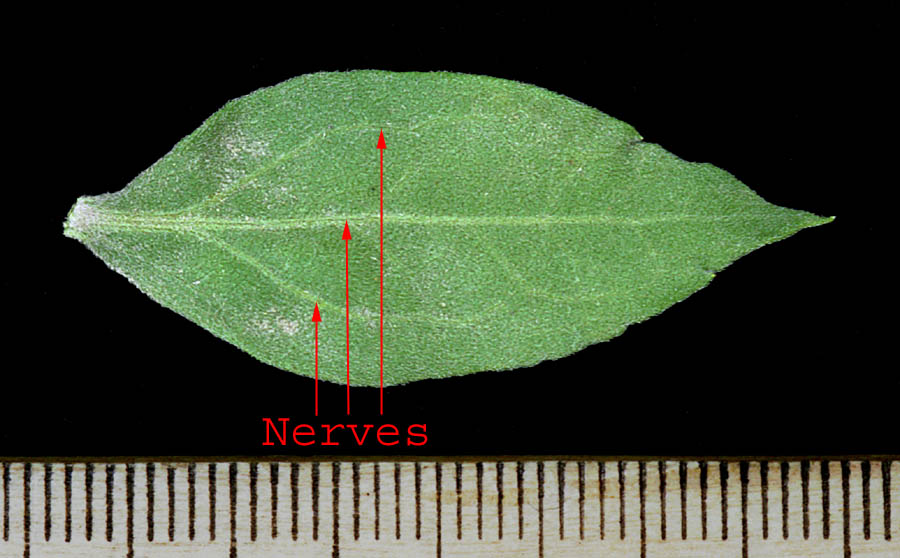
Velvety Goldenrod
Solidago mollis

Velvety Goldenrod
Upper-most Leaf Top
# 627 at Thunder Creek
30-August-2004
The specimens of S. mollis from the Regina and Moose Jaw area which I have observed possess characteristics which in some cases are intermediate between S. mollis and S. canadensis. I do not know whether these specimens are a pure strain, but they are the most common goldenrod in this area. I do not believe they can be classified as S. canadensis, and no other Solidago species appears to fit. They present a variety of leaf shapes, not all of which fulfill the requirements in Budd's Flora and Flora of Alberta for S. mollis. The requirements themselves are not always consistent. For example, one path to the species in Budd's Flora requires:
leaves obovate, NOT lanceolate to oval
Another path in Budd's Flora simply requires:
leaves obovate, NOT lanceolate
Budd's Flora also requires:
leaves 2.5-3 times as
long as wide,
NOT more than 4 times as long
On the other hand, Flora of Alberta requires:
cauline leaves usually
oval or ovate;
NOT usually oblanceolate
I believe Flora of the Great Plains captures the variety of leaf shapes more accurately when it describes the mid-cauline leaves as:
elliptic to lanceolate
and 2.5-5 x longer than wide,
irregularly dentate to subentire
The shape of the inflorescence of this species is also variable. It can vary from pyramidal with spreading recurved branches to cylindrical.
The floras are contradictory regarding the stem pubescence. One path to the species in Budd's Flora requires:
leaves and stem NOT densely hairy
while Flora of Alberta requires:
stems very pubescent, at
least above, usually throughout;
NOT glabrous,
NOT very sparingly hairy in or near the inflorescence
The stems are, in fact, pubescent. The stems of S. canadensis are also pubescent, but the stems of S. gigantea are not. The leaves of S. mollis are covered with short, fine, velvety hairs which are more easily felt than seen.
Finally, Flora of Alberta requires that:
heads usually secund, but NOT markedly secund
This may be true, but the distinction is only evident if you are already familiar with the species on both branches of the key (S. mollis and S. lepida).
The rest of the answers to the key questions from the floras are listed below.
|
Mollis: Answers to key questions in Budd's Flora and Flora of Alberta leading to this species.
|
Solidago: Answers to key questions in Budd's Flora and Flora of Alberta leading to this genus.
|